TINOSPORA
Tinospora Miers, Ann. Mag. Nat. Hist. Ser. 2.7: 35, 38. 1851, nom. cons.; Hook. f. & Thoms., Hook. f., Fl. Brit. Ind. 1: 96. 1872; T. Cooke, Fl. Bomb. Pres. 1: 18. 1901; Talbot, For. Fl. Bomb. Pres. & Sind 36. 1909; Brandis, Ind. Trees 24. 1911; Parker, For. Fl. Punj. ed. 1: 9. 1918 (Reprint 1973); Troupin in Turill & Mine-Redhead, Fl. Trop. East Afr. 17-18. 1956; Fl. China 7: 7-10. 2008; Fl. China @eFloras.org 7: 7; Fl. Pak. @ eFloras.org p.5.
Dioecious, perennial deciduous woody climbers. Stem succulent, corky. Leaves membranous, ovate, base cordate with 3-5(-7) nerves palmately arranged, lateral nerves distal, 1-3 pairs, sometimes with domatia or glandular patches; petioles swollen and geniculate at base. Flowers minute, in axillary, terminal or on leafless stem, solitary or racemes, cymose or panicles. Male Flowers: Sepals 6, 2-seriate, the 3 inner larger and membranous and outer 3 conspicuously smaller. Petals 6, obovate, cuneate, smaller than sepals, base clawed, often with lateral edges involute. Stamens 6, filaments free, apex thickened, anthers obliquely adnate. Female Flowers: Sepals and petals as in male flowers. Staminodes 6, clavate. Carpels 3, free; ovary unilocular, one-ovuled; stigmas broad, reflexed with short pointed lobes; style short and thick. Drupes 1-3 borne on a short columnar carpophore, ovoid or ellipsoid; style scar terminal, endocarp bony, rugose. Seeds usually curved round the intruded endocarp, albumen ruminate.
13 species
Tinospora cordifolia
Tinospora cordifolia
(Willd.) Hook.f. & Thompson. Fl. India 184. 1855; Fl. Brit. Ind. 1: 97. 1872; Parker, For. Fl. Punj. ed. 1: 9. 1918 (Reprint 1973); Tinospora cordifolia Miers., Ann. & Mag. Nat. Hist., Ser.2, VII: 38. 1851; Sharma & Kachroo, Illustr., Fl. Jammu 2: t.5.1983; Kaur & Sharma, Fl. Sirmaur. 128. 2004; Menispermum cordifolius (Willd.) DC., Syst. Nat. 1: 518. 1817; Cocculus cordifolius (Willd.) DC. in DC., Syst. Nat. 1: 517. 1817.
Dioecious; a large woody succulent climber, glabrous. Stem striate, glabrous, often with scattered lenticels, bark greyish-brown (green when young), corky, flaking off with age. Aerial roots arise from stem during monsoon. Leaves simple, alternate, exstipulate; petiole 2-7 cm long, pulvinate, glabrous; leaf blade 4-25 cm x 4.5-13 cm, broadly ovate or suborbicular, chartaceous, membranous, thin, green, base cordate to sinuate, margin entire, apex abruptly cuspidate or acuminate, both surfaces glabrous; basal nerves 2-3 pairs; domatia usually present abaxially in axils of basal nerves. Flowers small, 6-8 mm across, greenish- yellow, unisexual, appearing when plant is mostly leafless. Inflorescence slender racemes or racemose panicles, 5-15 cm long, axillary, terminal on old wood, solitary or in fascicles, glabrous; peduncle up to 5 cm long. Male Flowers: Solitary or in fascicles, bracteate, pedicels slender, glabrous about 3- 4 mm long. Sepals 6, in 2 series of 3 each; outer series smaller, ca. 1-1.5 mm long, free, imbricate, subelliptic, acute; inner series larger, 3-4 mm long, elliptic, concave. Petals 6, in 2 series, free, equal, 2-2.5 mm long, +/- rhomboid, obovate, clawed, lateral edges inrolled, fleshy. Stamens 6, free; filaments clavate, ca. 3 mm long; anthers longitudinally dehiscent by oblique slits. Female Flowers: Mostly solitary in female inflorescences, rarely in cymes. Sepals and petals as in male flowers. Staminodes 6 (antherless), opposite the petals, +/- clavate, ca. 1 mm long. Carpels 3, apocarpous, inserted on +/- globose carpophore; ovaries 3, curved-ellipsoidal, unilocular with solitary lateral ovule; style 0 or very short; stigma capitate, reflexed with short pointed lobes. Drupes 1-3 borne on short, ovoid or ellipsoid 2-3 mm long carpophore; fruiting pedicel 8-11 mm long. Drupes ovoid to +/- globose, ca. 1.2 cm x 1.1 cm, smooth, red with endocarp tubercled; seed 1, lateral, tubercled.
Common Names: Gulbel, Indian Tinospora, Heart-leaved Moonseed, Guduchi, Giloy, Guluch, Gurch, Vajra, Vara etc. (Hindi)
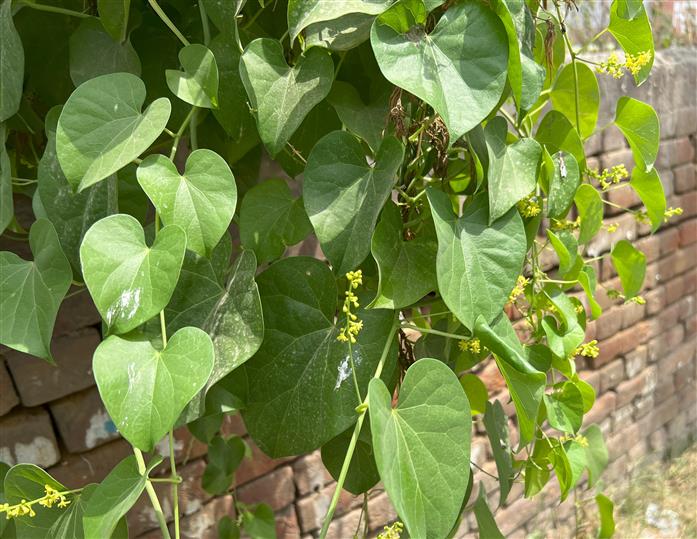
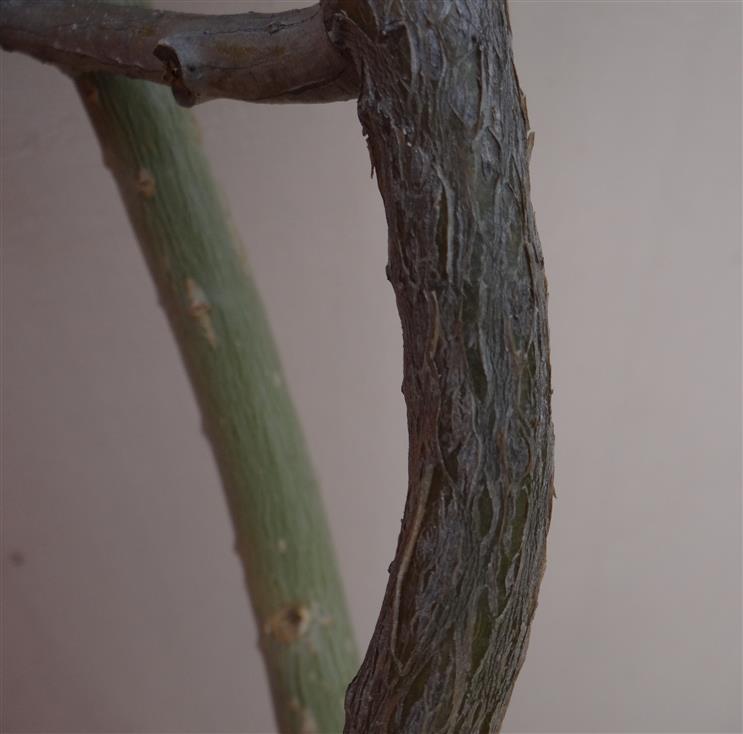
.JPG)
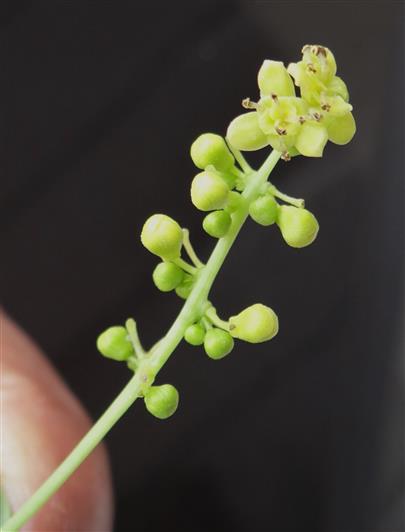
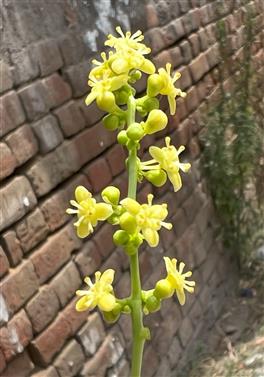
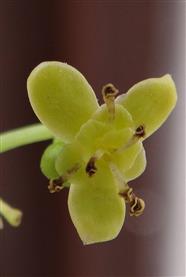
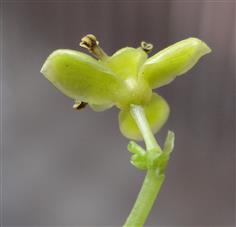
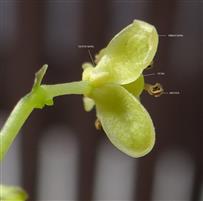

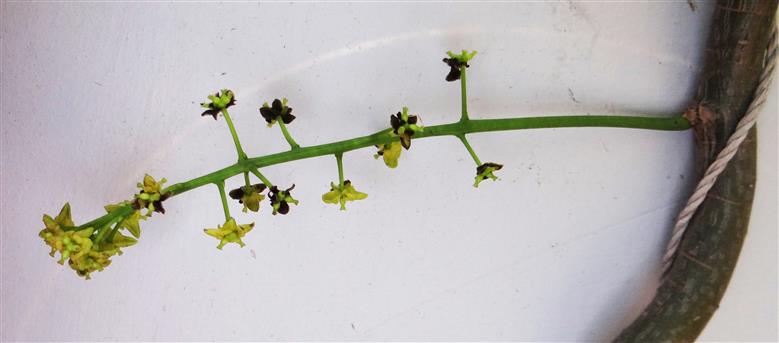
 and Upper view (R).JPG)
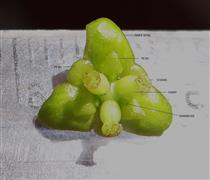
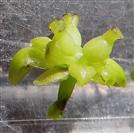
.JPG)
.JPG)
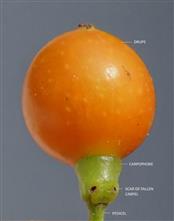
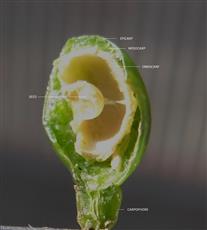
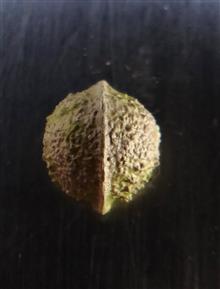
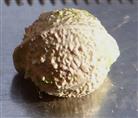
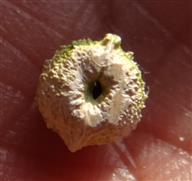



.JPG)





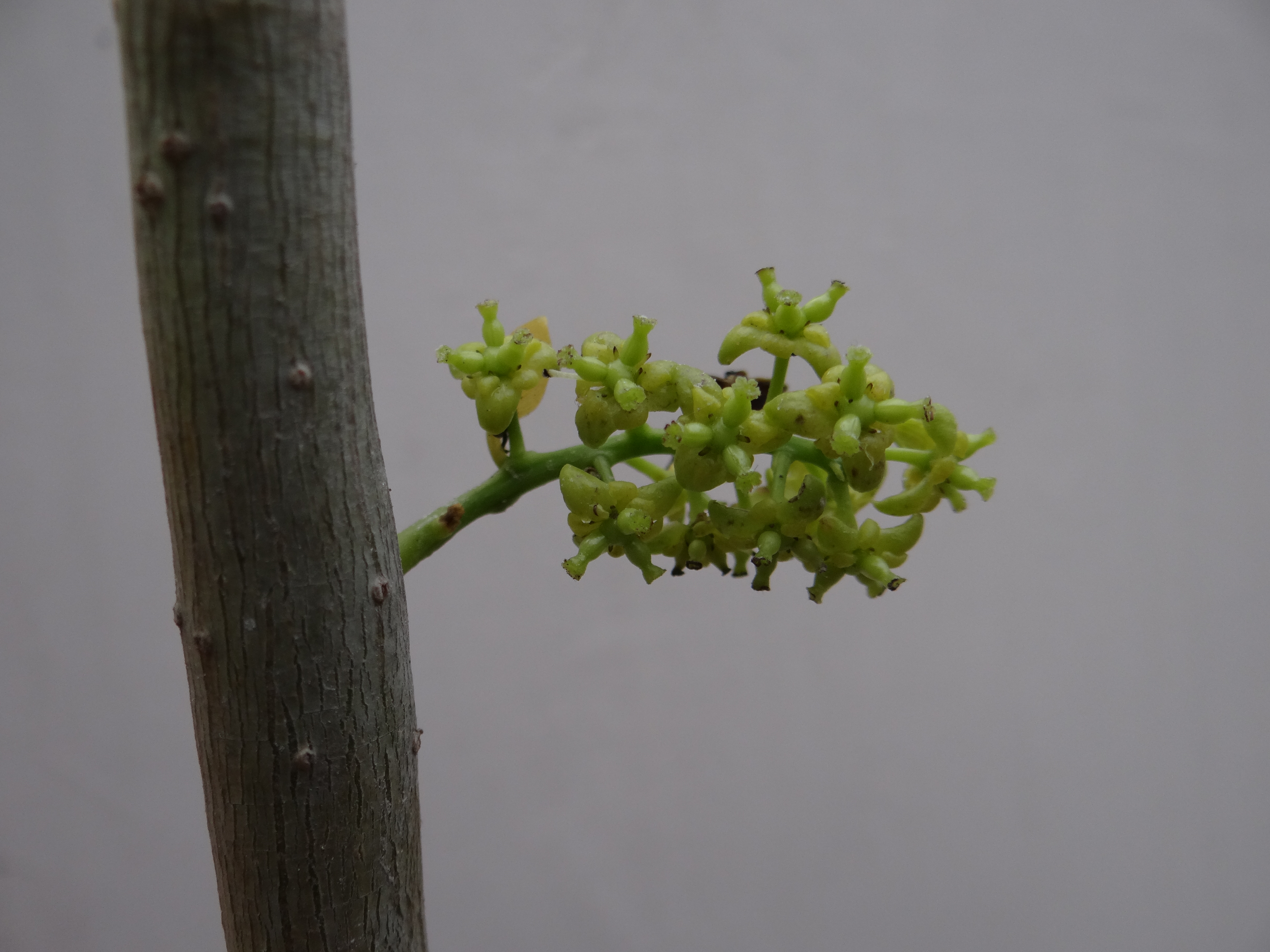

 and Upper view (R).JPG)


.JPG)
.JPG)




